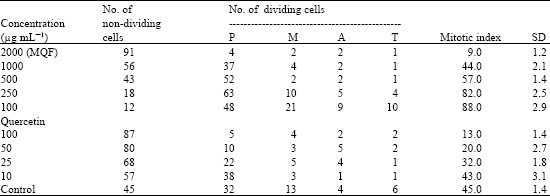Research Article
Anti-Mitotic and Cytotoxic Effect of Mussaenda queensirkit
School of Chemical and Biotechnology, SASTRA University, Thanjavur, India
A.I. Charles Dorni
CARISM, SASTRA Deemed University, Thanj avur, India
Hannah R. Vasanthi
Sri Ramachandra Chandra Medical College and Research Institute, Porur, Chennai, India











